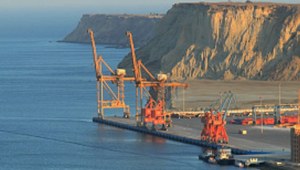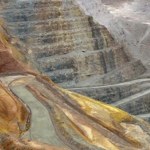Karachi : A vast reserve of petroleum and natural gas has been discovered in Pakistan’s territorial waters, as reported by a news source on 7 September.
Read: OGDC discovers significant gas reserves in Sanghar, Sindh
As per details, the official, who is closely involved with the project, revealed that a comprehensive three-year survey was carried out in partnership with a “friendly country” to confirm the presence of these substantial reserves. The survey pinpointed the exact location of the deposits, and the government has been informed by the relevant authorities.
Describing the initiative as part of Pakistan’s strategy to harness its “blue water economy,” the official stated that plans for bidding and exploration are already under review, potentially paving the way for exploratory operations in the near future. However, the actual extraction of oil and gas from the seabed could take several years to materialise.
Beyond oil and gas, the “blue water economy” offers additional opportunities, with the ocean floor holding other valuable minerals and elements that could further bolster Pakistan’s economic potential.
The official emphasised the urgency of capitalizing on this discovery, suggesting that quick action could positively reshape the country’s economic trajectory. Early estimates indicate that the reserves may rank among the world’s top four largest oil and gas deposits.
Read: OGDCL announces major gas discovery in RYK
Currently, Venezuela holds the largest oil reserves, estimated at 3.4 billion barrels, with the United States leading in untapped shale oil reserves. Saudi Arabia, Iran, Canada, and Iraq make up the remaining top five.
Former Oil and Gas Regulatory Authority (OGRA) member Muhammad Arif acknowledged the potential of the discovery but cautioned against overly high expectations. He explained that while optimism is warranted, there is no absolute guarantee that the reserves will be as extensive as projected.
When asked if the discovery could meet Pakistan’s energy demands, Arif said the outcome would depend on the volume of the reserves and the rate at which production can be sustained. “If it’s primarily gas, it could reduce LNG imports. If it’s oil, we could cut down on oil imports,” he noted. However, he warned that this remains speculative until the reserves are thoroughly analysed and drilling operations commence. Arif highlighted that exploration alone could cost upwards of USD 5 billion, with a potential timeline of four to five years before the offshore reserves could be fully tapped.
Read: OGDCL begins commercial production of tight gas in Sindh
Even if the reserves are confirmed, further investment in infrastructure, such as wells and pipelines, will be necessary to convert the discovery into a fuel-producing asset. This monumental find holds great promise for Pakistan’s future, but the road ahead will require careful planning, substantial investment, and a realistic outlook.







